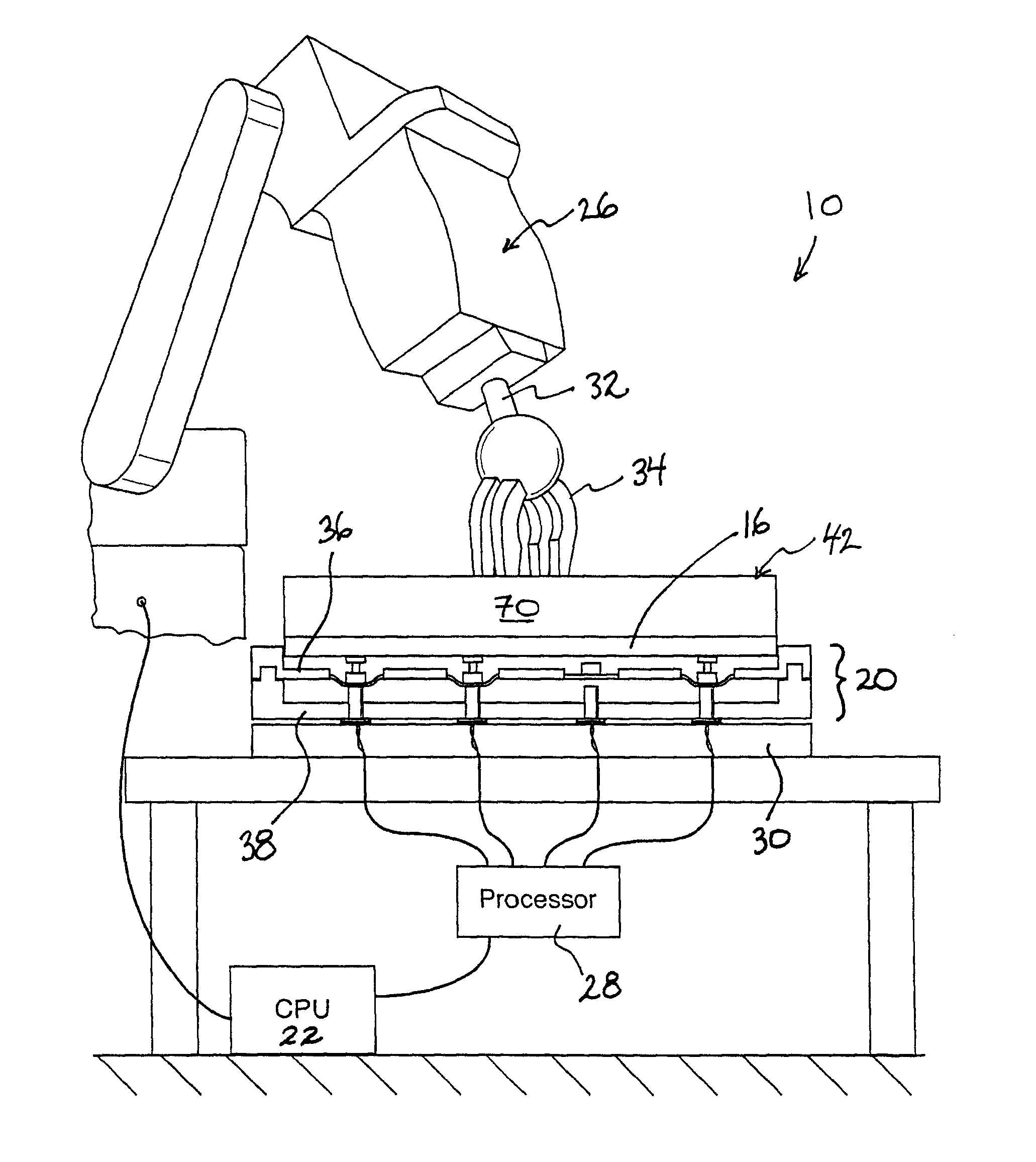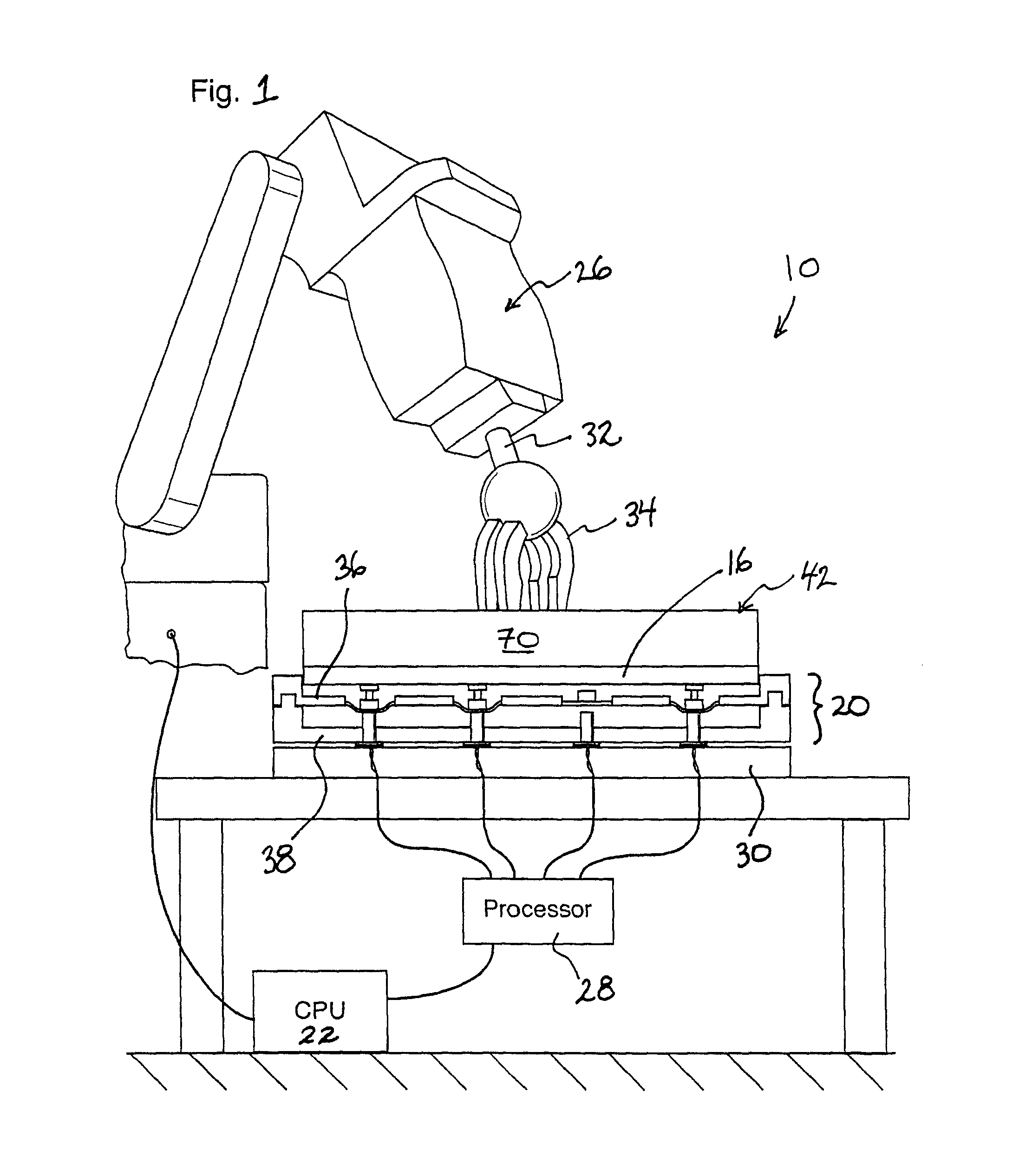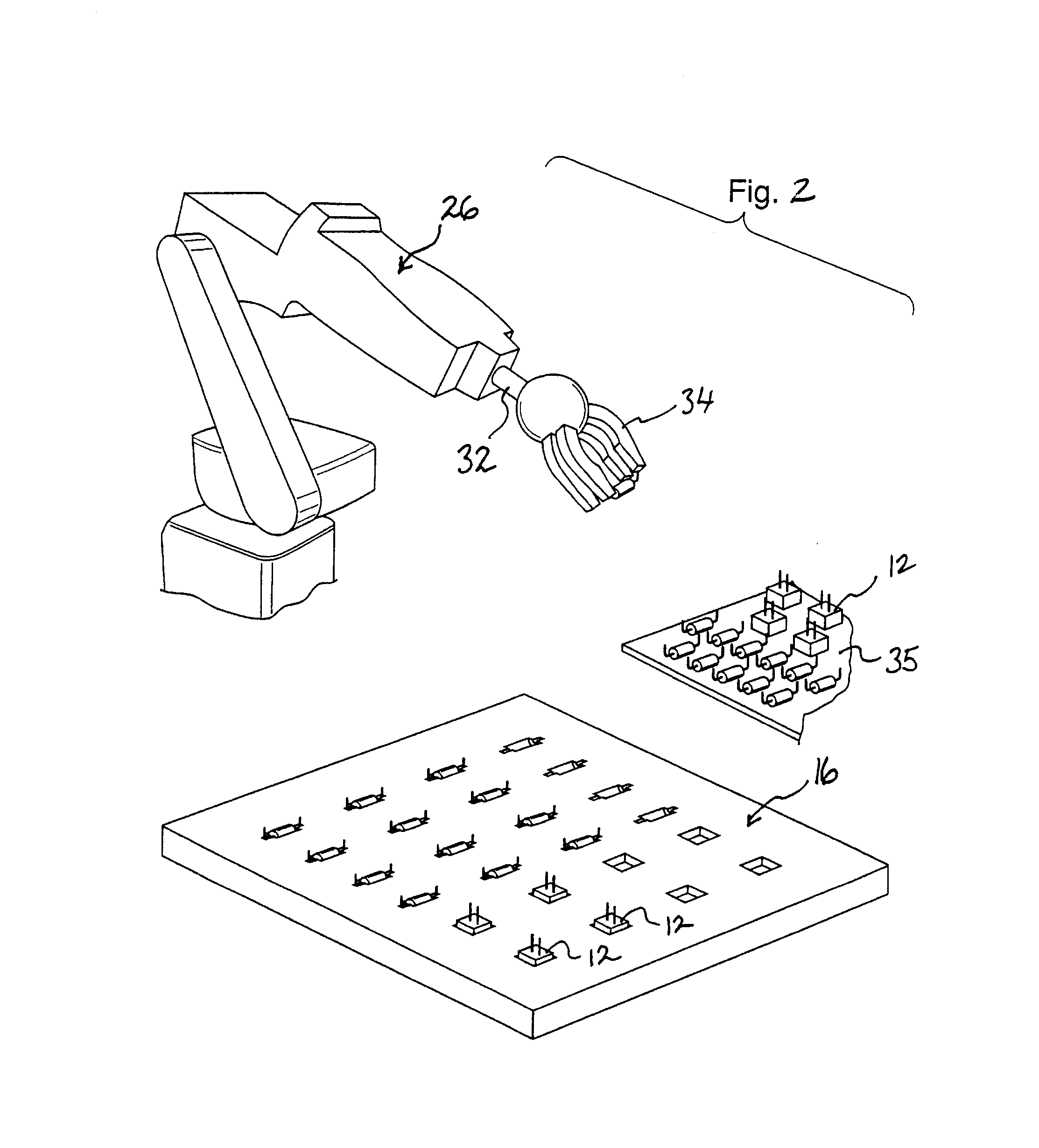Apparatus for the Automated Testing and Validation of Electronic Components
a technology for electronic components and automatic testing, applied in the direction of electronic circuit testing, measurement devices, instruments, etc., can solve the problems of not being able to meet the speed of assembly speed, the conventional automatic test equipment used to test individual components is limited to less than 12 ghz, and the adoption of higher processing speed is subject to major constraints
- Summary
- Abstract
- Description
- Claims
- Application Information
AI Technical Summary
Benefits of technology
Problems solved by technology
Method used
Image
Examples
Embodiment Construction
[0030]Reference is made to FIG. 1 which shows an automatic test equipment 10 unit for use in the automated testing and validation of electronic components 12 (FIG. 2) and preferably the concurrent testing of multiple components 12 positioned with a test die 16 prior to their assembly as part of a circuit board and / or the like. As will be described, the automatic test equipment 10 is provided with a mass interconnect system 20 which is configured to achieve the simultaneous high speed testing of a variety of different types of electronic components 12, including by way of non-limiting example, switches, chips, resistors, diodes, and the like without requiring significant device-specific customization and / or reconfiguration for each different die or unit under test 16 to be tested.
[0031]As shown best in FIG. 1, in addition to the mass interconnect system 20, the automatic test equipment 10 includes a main processor 22, a robotic handler assembly 26, a test protocol controller 28, and ...
PUM
 Login to View More
Login to View More Abstract
Description
Claims
Application Information
 Login to View More
Login to View More - R&D
- Intellectual Property
- Life Sciences
- Materials
- Tech Scout
- Unparalleled Data Quality
- Higher Quality Content
- 60% Fewer Hallucinations
Browse by: Latest US Patents, China's latest patents, Technical Efficacy Thesaurus, Application Domain, Technology Topic, Popular Technical Reports.
© 2025 PatSnap. All rights reserved.Legal|Privacy policy|Modern Slavery Act Transparency Statement|Sitemap|About US| Contact US: help@patsnap.com



